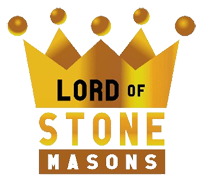Types of Sandstone: A Guide to Varieties, Grades & Their Uses
Sandstone is a versatile and popular natural stone known for its earthy beauty and strength. But did you know there are several types of sandstone, each with unique characteristics? Whether you’re a builder, landscaper, or designer, understanding the different sandstone types helps you choose the right material for your project.
In this blog, we’ll explore the most common sandstone varieties, their mineral makeup, grades, and practical applications—from architecture to landscaping.
What Are the Different Types of Sandstone?
While all sandstone is made from sand-sized mineral grains, not all sandstone is the same. Differences in composition, color, grain size, and cementing material give rise to various sandstone types with distinct appearances and properties.
Here are the main types of sandstone you should know:
- Quartz Sandstone
Quartz sandstone is the most common and durable variety. It’s composed of over 90% quartz grains, making it incredibly strong and resistant to weathering.
Key features:
- Light in color (usually white, grey, or pale yellow)
- High durability
- Low porosity
Best for:
- Load-bearing construction
- Flooring and paving
- Harsh-weather outdoor areas
✅ Ideal if you’re after long-lasting sandstone applications in high-traffic or exposed areas.
- Feldspathic (Arkose) Sandstone
Also known as arkosic sandstone, this type contains a significant amount of feldspar—typically more than 25%.
Key features:
- Pink, red, or cream tones
- Slightly less resistant than quartz sandstone
- Richer in color variation
Best for:
- Decorative cladding
- Garden walls
- Interior sandstone features
✅ A great choice for projects where aesthetic appeal is just as important as function.
- Lithic Sandstone
Lithic sandstone contains a high percentage of rock fragments (lithic clasts), making it darker and more textured than other types.
Key features:
- Often grey, dark brown, or greenish
- Contains volcanic or metamorphic rock fragments
- More porous and variable in grain
Best for:
- Natural-looking landscape features
- Rustic or aged finishes
- Projects where texture is valued over uniformity
✅ Popular in natural sandstone landscaping due to its raw and earthy appearance.
- Greywacke
Sometimes grouped under lithic sandstone, greywacke is a dark, dense sandstone that also contains clay and silt.
Key features:
- Dark grey to black
- Fine-grained with a mix of materials
- Very strong and compact
Best for:
- Structural applications
- Historical restoration
- Slip-resistant paving
✅ Greywacke is often used in areas that need a natural yet high-performance stone.
🏗️ Understanding Sandstone Grades
Aside from varieties, sandstone grades refer to the quality and suitability of the stone for different applications. Grading often considers:
- Hardness and density
- Water absorption levels
- Consistency in color and texture
- Presence of cracks or impurities
High-grade sandstone is typically used for structural work, high-end landscaping, or commercial buildings. Lower grades may be more affordable and used in informal garden features or decorative elements.
🎨 Choosing the Right Sandstone for Your Project
Whether you need a tough surface for your patio or a stunning facade material, knowing the types of sandstone helps you make the right call.
Ask yourself:
- Do I need high durability? → Go with quartz sandstone.
- Do I want richer color tones? → Choose feldspathic sandstone.
- Am I building a rustic landscape? → Consider lithic sandstone or greywacke.
- Is budget a concern? → Lower sandstone grades may still suit non-structural applications.
🧠 Why It Matters to Know the Sandstone Varieties
Understanding sandstone types helps you:
- Match the right stone to the right environment
- Improve the longevity of your build
- Ensure your chosen stone performs as expected in different weather and usage conditions
Whether you’re working on a modern landscape, heritage restoration, or a commercial build, there’s a sandstone variety suited for the job.
✅ Summary: Types of Sandstone and Their Uses
Let’s recap:
- Quartz sandstone → High strength, pale colors, excellent durability
- Feldspathic (arkose) sandstone → Colorful, decorative, less weather-resistant
- Lithic sandstone → Textured, dark-toned, good for rustic designs
- Greywacke → Dense, mixed grains, ideal for slip-resistant and strong features
- Sandstone grades → Help determine the stone’s quality and usage potential
📞 Need Help Selecting the Right Sandstone Type?
Not sure which sandstone variety is right for your project? Our team can help you explore different types of sandstone, assess your design needs, and recommend the best grade and finish—whether it’s for a patio, retaining wall, or architectural feature.
Contact us today for expert advice on sandstone grades, varieties, and applications.
